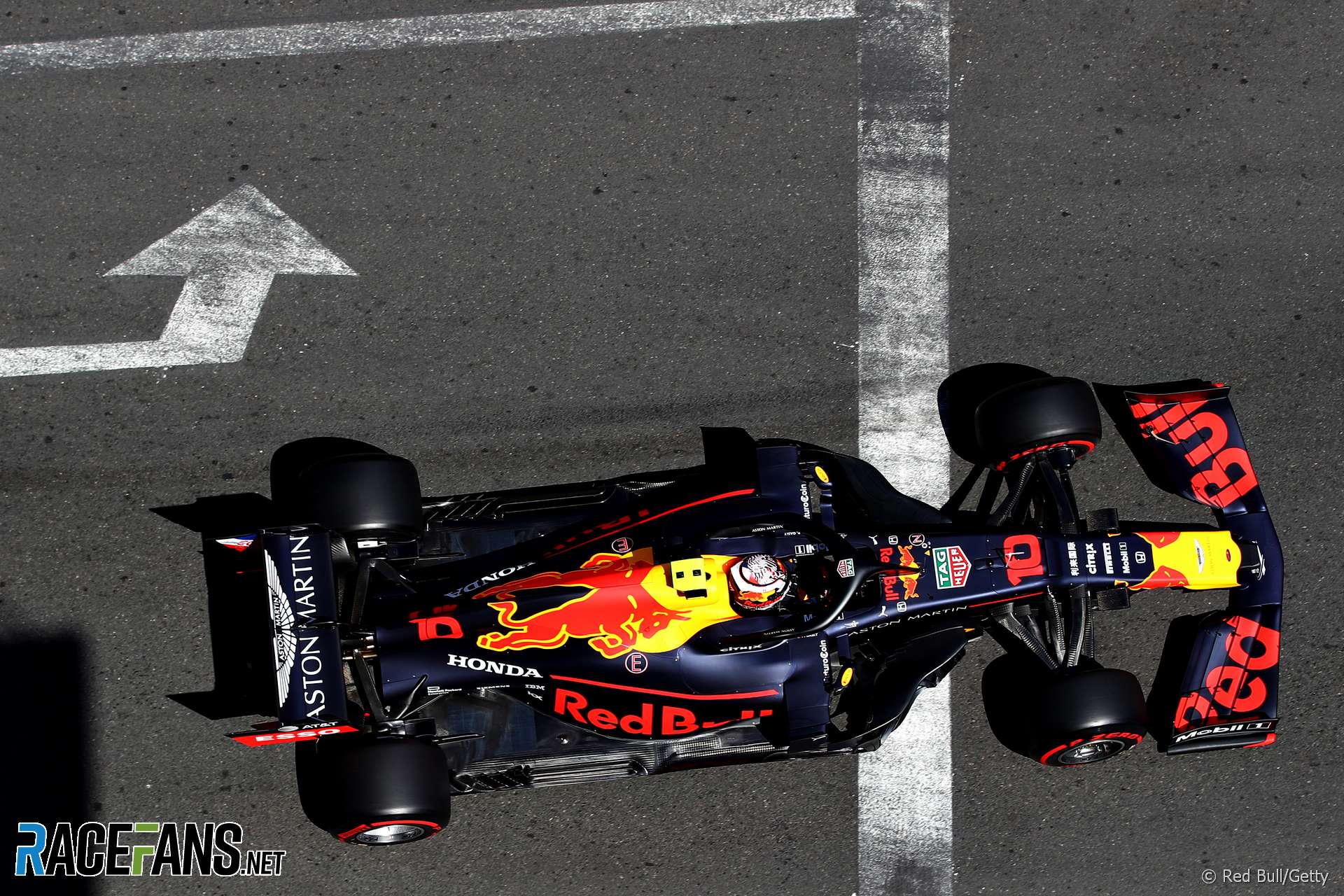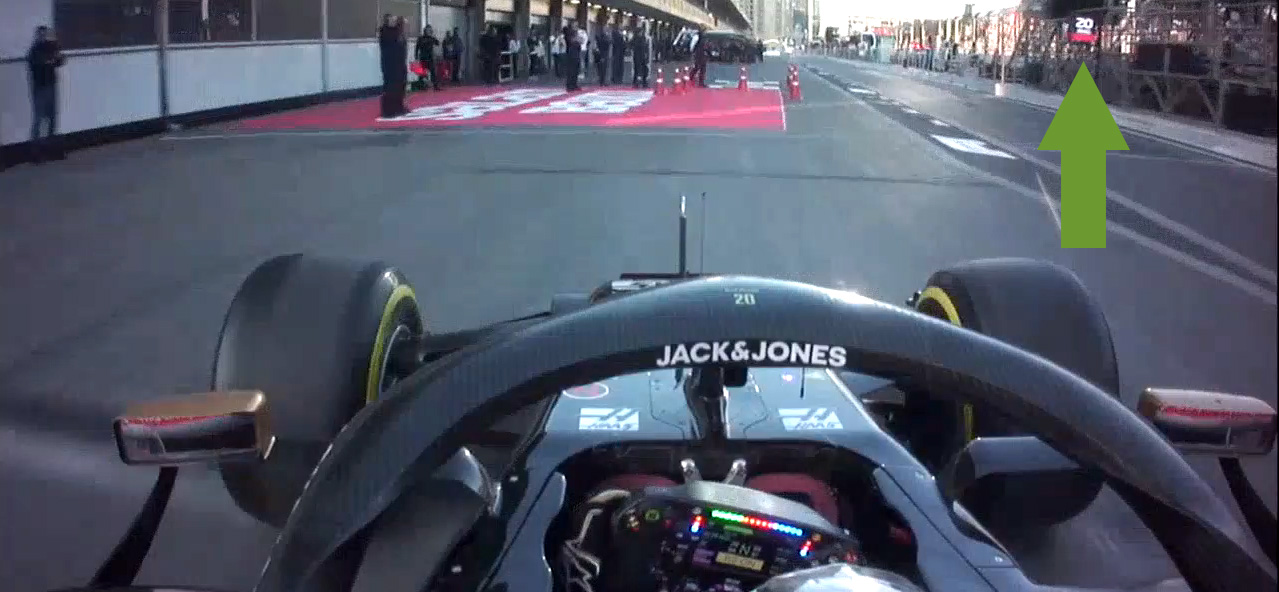Pierre Gasly will start the Azerbaijan Grand Prix from the pit lane after he was found to have failed to stop at the weigh bridge during yesterday’s second practice session.
The ruling has attracted comment and criticism from some claiming it is unduly harsh. But the stewards’ decision is consistent with past rulings from recent seasons.Gasly was penalised under article 29.1 (a) of the Sporting Regulations which states: “Any driver who fails to stop when asked to do so, and then fails to bring the car back to the FIA garage, or if work is carried out on the car before it is returned to the FIA garage, will be required to start the race from the pit lane.”
This rule has been in place for several years and some of Gasly’s rivals have fallen foul of it in that time. Carlos Sainz Jnr was given a pit lane start at Monaco in 2015 for failing to stop at the weigh bridge.
The following year Kevin Magnussen did the same in the same session at the Bahrain Grand Prix and got the same penalty. Gasly is the first person to transgress in this way since Magnussen three years ago.
Coincidentally, when Gasly was summoned to the weigh bridge at the end of second practice yesterday Magnussen’s car was already there being weighed. Perhaps seeing the Haas there caused Gasly to assume he wouldn’t also be called.
However the signals on the right-hand side of the pit lane were clearly indicating Gasly’s car number and three-letter acronym ‘GAS’. As he came into the pits, Gasly was told to “attack pit entry, focus on the marks”. He did that, correcting a snap of oversteer as he dodged through the chicane on the way in, but was clearly too preoccupied to notice the signs telling him to stop at the weigh bridge.
Once he’d missed it, the team could have brought his car to the scales for weighing, which would have given him the chance to avoid a penalty. This wasn’t done either, so it wasn’t simply Gasly’s oversight which led to his sanction.
Having to start from the pit lane is a major setback. But neither Gasly nor Red Bull can feel hard done by it. They can at least draw some consolation from the likelihood that they can make better progress from there at Baku, where overtaking is not too hard and Safety Car periods are likely, than at other circuits.
Advert | Become a RaceFans supporter and
Magnussen and Gasly’s weigh bridge signals
At the end of second practice Magnussen saw the signal telling him to stop at the weigh bridge (above) but Gasly drove past the same signals for him (below).
Advert | Become a RaceFans supporter and
2019 F1 season
- Crying in the Melbourne car park at 2019 grand prix was my career low – Ocon
- McLaren Racing reports reduced £71 million loss in 2019
- Kvyat: Hockenheim podium last year was “my biggest achievement” so far
- How the FIA’s new encrypted fuel flow meter targets Ferrari’s suspected ‘aliasing’ trick
- “He smashed my office door”: 23 must-see moments from ‘Drive to Survive’ season two







GT Racer (@gt-racer)
27th April 2019, 12:32
I saw a lot of people talking about how it doesn’t matter because it was only practice.
The cars still have to be running to legal spec in practice (They go through scrutineering on Thursday remember & must be legal at all times from that point on) in part because in the event of something happening that prevents qualifying from running I am fairly sure there is something within the regulation that allows them to set the grid based on practice times.
The penalty is also more lenient than it used to be as the penalty for missing the weight bridge used to be immediate exclusion from the rest of the weekend.
Jere (@jerejj)
27th April 2019, 13:05
@gt-racer Indeed.
anon
27th April 2019, 13:29
@gt-racer, you are indeed correct that the regulations do state that the times from the practice sessions can be used to set the order of the grid if drivers cannot compete in qualifying.
grat
27th April 2019, 18:01
It’s still a stupid penalty. At the very least, the stewards (who apparently disagreed with the penalty) should be allowed some discretion. Since FP2 is *NOT* going to be the basis of qualifying, and there’s no indication it ever would have been, a simple exclusion from FP2, or a 5, or 10 grid spot penalty, would be sufficient.
Any other weighing infraction is punishable by disqualification, or a grid drop penalty determined by the stewards– so why not this one?
Releasing a car in an unsafe manner (which has caused injury in the past) is a 5,000 Euro fine. Speeding in the pitlane during practice (again, with potential for injury) is up to a 1,000 Euro fine.
I’m in favor of rules being clear, concise, and consistently enforced. But this particular rule needs to be re-examined.
DAllein (@)
27th April 2019, 13:08
Of course it is not surprising or harsh!
It is just the case of rules and penalties and Mr.Horner, who always complains and tries to bend rules to his liking!
If Paradise exists, and Mr.Horner somehow cheats to get there, he will start complaining right away – gates are too golden, too many clouds, birds sing to loud…
erikje
27th April 2019, 13:14
It’s very simple. The FIA should notify the driver and the team. If one of them missed the call there is a fallback option.
The sign is small, there is already a car on the weightbridge ( distracting the driver who probably looked that direction)
So, no not a clean penalty but amateuristic approach by the FIA.
Just like the starting lights and the wider rear in bahrein.
GT Racer (@gt-racer)
27th April 2019, 13:54
They do. The driver gets notified by the LED board/Lights at pit entry & the teams also get notified via the race control screen on the pit wall.
Giving the teams the notification as well as the drivers was something they introduced when they began to allow teams to wheel the car back to be weighed & not receive a penalty as long as they had not changed anything on the car before doing so.
It used to be that as soon as the driver drove past the light it was an instant penalty (And even immediate exclusion from the weekend until maybe 20 years ago) so it’s all far more lenient than it used to be.
Also remember that a lot of these things were introduced because the people that introduced them knew the way’s teams used to get around them in the past. A lot of the modern scrutineering methods/regulations were overseen by people like Charlie Whiting & Herbie Blash who put them in place based around knowing how they had worked the system while at Brabham.
mzso (@mzso)
27th April 2019, 17:29
@gt-racer
More stupid is definitely not less bad. And it doesn’t make the current system better than it is.
I don’t think anyone criticized weighing or how it’s weighed. Only the driver notifications.
erikje
27th April 2019, 17:32
If so, the team should have taken responsibility.
mzso (@mzso)
27th April 2019, 16:52
@erikje
Sacrilege. The FIA is forbidden to do anything rational.
The driver should also get an audio alarm.
Chaitanya
27th April 2019, 14:13
As one of comentrators of sky sports pointed out it was incompetence of team as well which was equally to blame for this penalty apart from the driver himself.
Tov (@tov)
28th April 2019, 7:41
There is that 107% rule, right? So basically Gasly should not be taking part in the race at all. There is that stupid rule that says that driver could be allowed to race based on FP times even if he does not qualify to the race. While I could somehow understand using that rule when something force-majeur like happens, eg. a crash, but here driver was excluded from qualifying for regulation infrigement, so why is he allowed to race? I find that really strange. Frankly speaking I find that 107% rule a mockery to regulations. It is there, but so what? It is always circumvented anyway.